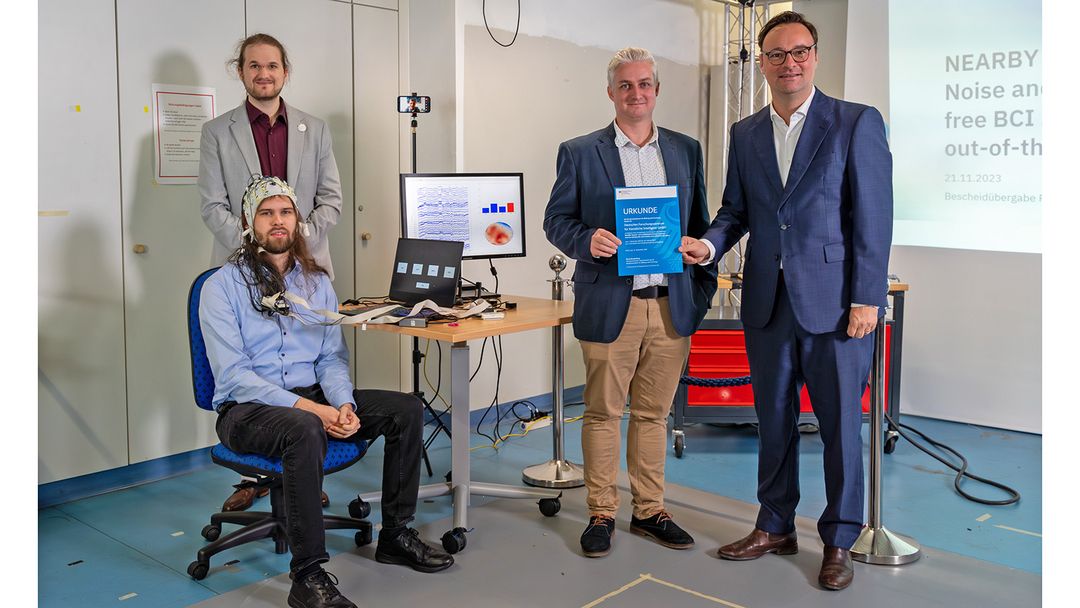Brain-computer interfaces, or BCIs for short, offer a promising opportunity for interaction between the human brain and technology. In a joint project, researchers from DFKI and the French Inria (Institut national de recherche en sciences et technologies du numérique) want to work on a robust and variability-free BCI system for use outside the laboratory. Today, Oliver Luksic, State Secretary at the Federal Ministry for Digital and Transport Affairs, handed over the funding decision for the NEARBY project to project manager Dr. Maurice Rekrut, DFKI. The decision was handed over on behalf of Mario Brandenburg, State Secretary at the Federal Ministry of Education and Research.
BCIs can be used in industrial production as a communication channel between humans and robots. In fact, targeted brain activity can be converted into a specific control signal and executed by so-called co-bots in human-robot collaboration. In the field of robotic assistance in care or rehabilitation, BCIs can support people with physical impairments. For example, the electrical signals from the brain can be used to control a wheelchair or operate computers. In rehabilitation after a stroke, the mere idea of an exoskeleton can trigger an accompanying movement that supports passive motor training.
However, there are still some challenges associated with the technology. For example, decoding capabilities are limited. Current BCI systems are not always able to interpret and translate brain signals accurately. In addition, the signals arrive noisy. The performance of BCIs can also vary depending on the user and the form of the day. The systems have to be calibrated individually and usually repeatedly, which takes some time. In addition, there are no integrated systems. The best quality is achieved under laboratory conditions and with gel-based electrodes, although these are much more time-consuming to use than dry electrodes and may be perceived as uncomfortable. In production scenarios, dry electrodes integrated into the safety helmet would be the best option.
The partners Inria and DFKI with the research departments Cognitive Assistants and Robotics Innovation Center contribute their different competencies to NEARBY (Noise and Variability-free BCI systems for out-of-the-lab use): Inria its expertise in basic research on BCIs and DFKI its many years of experience in implementing research results for industrial applications. To this end, they collect EEG data from test subjects over a long period of time and under different conditions such as fatigue, stress, time of day, or type of EEG headset. Using DFKI's Secure Architecture for Machine Learning (SEMLA), the EEG data collected in the project will be anonymized and enriched with additional metadata, such as time of day, stress level, or type of electrodes. The aim is to build a comprehensive open-source database that will be made available to the scientific community for training machine learning systems in order to better understand the variability of brain activity under these different conditions and to develop algorithms that can deal with it.
The researchers believe that this will bring them a step closer to their long-term goal: robust BCIs that work reliably with dry-electrode EEGs at home or at work for an entire day and without recalibration.

